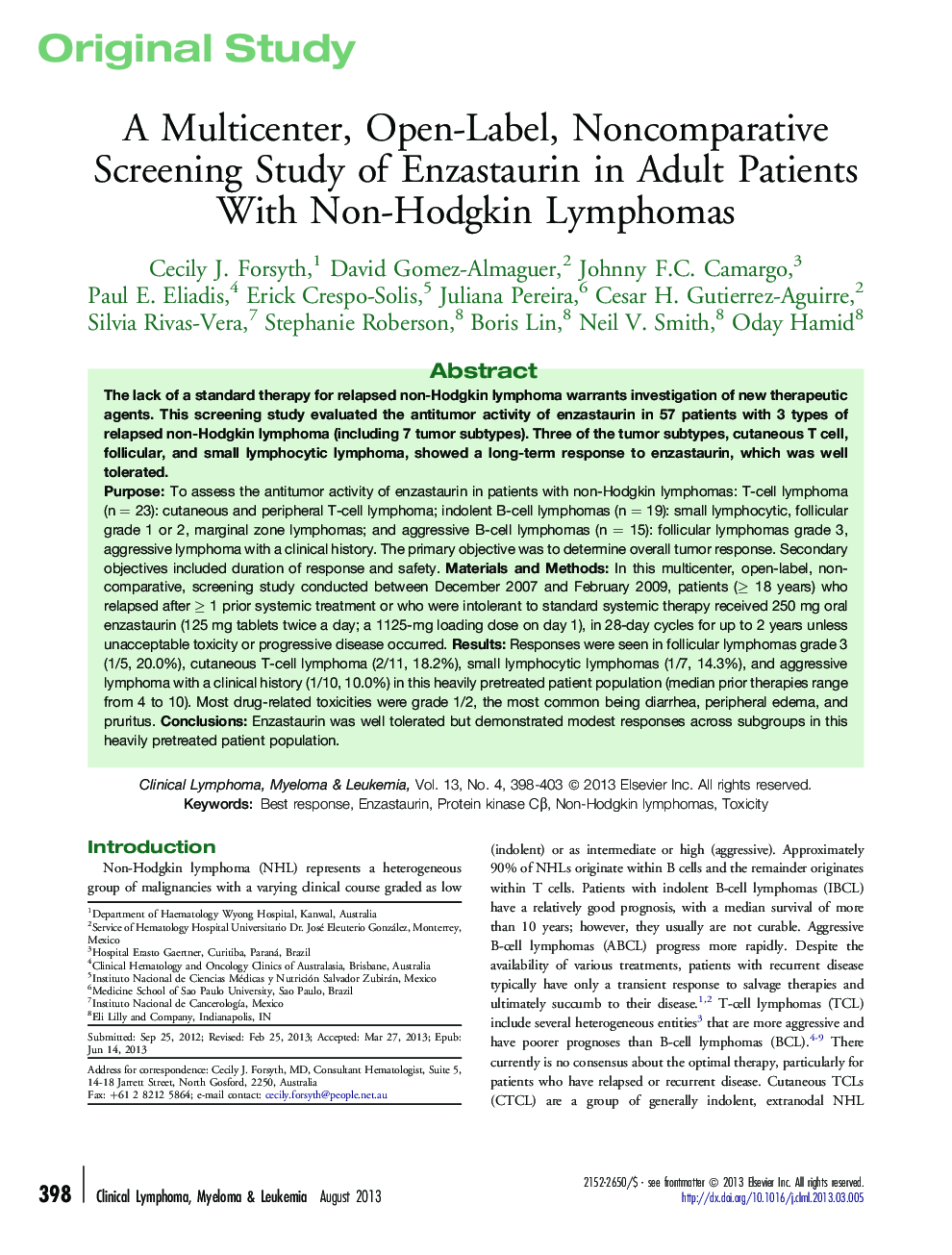| Article ID | Journal | Published Year | Pages | File Type |
|---|---|---|---|---|
| 2754985 | Clinical Lymphoma Myeloma and Leukemia | 2013 | 6 Pages |
PurposeTo assess the antitumor activity of enzastaurin in patients with non-Hodgkin lymphomas: T-cell lymphoma (n = 23): cutaneous and peripheral T-cell lymphoma; indolent B-cell lymphomas (n = 19): small lymphocytic, follicular grade 1 or 2, marginal zone lymphomas; and aggressive B-cell lymphomas (n = 15): follicular lymphomas grade 3, aggressive lymphoma with a clinical history. The primary objective was to determine overall tumor response. Secondary objectives included duration of response and safety.Materials and MethodsIn this multicenter, open-label, noncomparative, screening study conducted between December 2007 and February 2009, patients (≥ 18 years) who relapsed after ≥ 1 prior systemic treatment or who were intolerant to standard systemic therapy received 250 mg oral enzastaurin (125 mg tablets twice a day; a 1125-mg loading dose on day 1), in 28-day cycles for up to 2 years unless unacceptable toxicity or progressive disease occurred.ResultsResponses were seen in follicular lymphomas grade 3 (1/5, 20.0%), cutaneous T-cell lymphoma (2/11, 18.2%), small lymphocytic lymphomas (1/7, 14.3%), and aggressive lymphoma with a clinical history (1/10, 10.0%) in this heavily pretreated patient population (median prior therapies range from 4 to 10). Most drug-related toxicities were grade 1/2, the most common being diarrhea, peripheral edema, and pruritus.ConclusionsEnzastaurin was well tolerated but demonstrated modest responses across subgroups in this heavily pretreated patient population.
